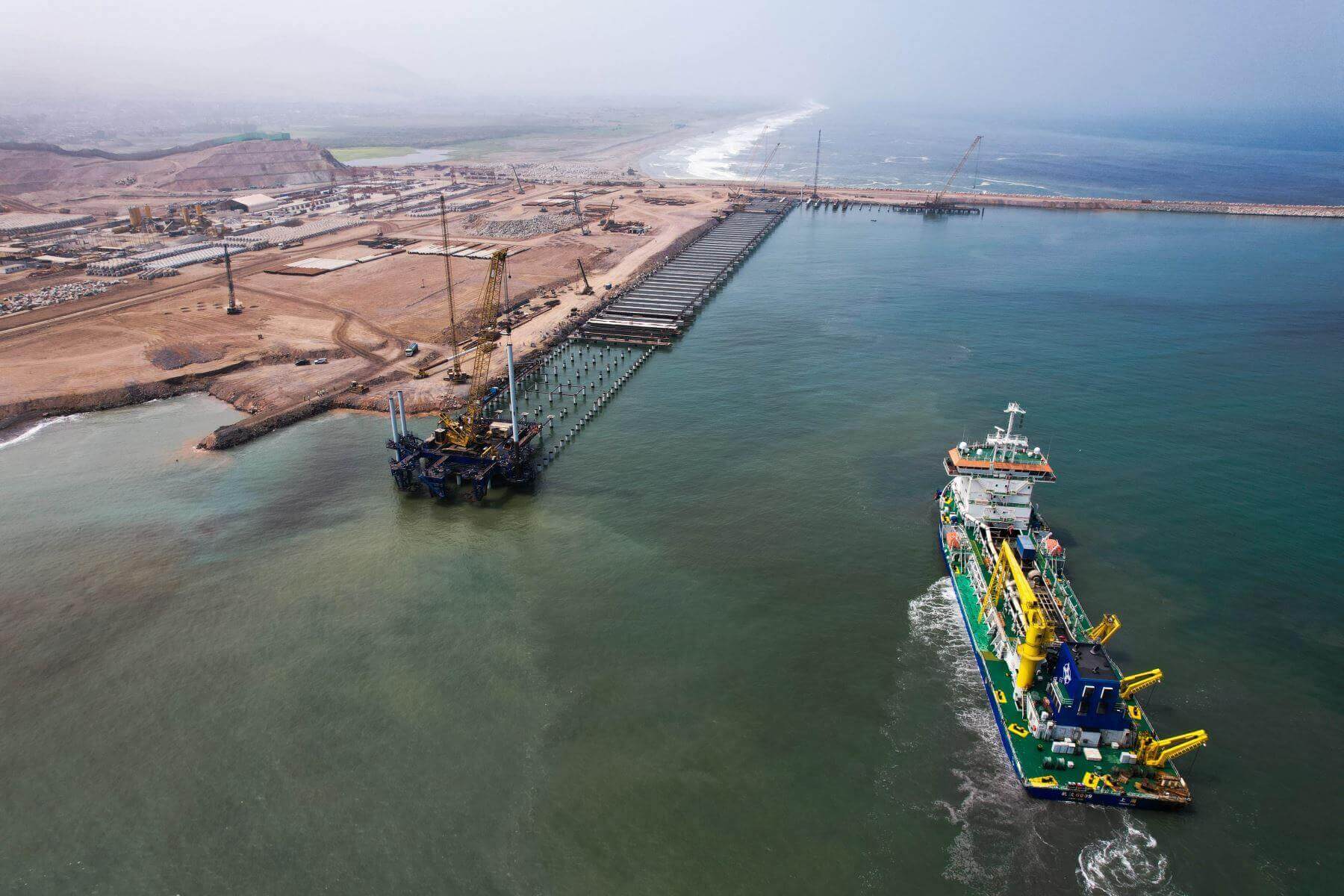A Future That Links Peru with China: The Megaport in Chancay
Photo: Flickr.
The Multipurpose Port Terminal of Chancay is one of the most strategic infrastructure projects in Peru, with an investment of 3.6 billion dollars, where the Chinese company COSCO holds 60% and the Peruvian mining company Volcan holds 40%. The port, with 15 docks capable of accommodating the world’s largest container ships, promises to position itself as a key commercial hub in the Pacific for trade between China and South America, reducing cargo transit time to Asia by 10 days. Additionally, Chancay is expected to create thousands of jobs and boost the Peruvian economy, attracting a significant portion of regional maritime trade.
However, the project has generated strong criticism and local opposition due to its social and environmental impacts. Residents of Chancay have reported structural damage to their homes caused by dynamite explosions used in the construction of the port, and the livelihoods of 3,000 fishermen are at risk due to pollution and increased maritime traffic. Local non-governmental organizations have warned that artisanal fishing could disappear. Moreover, residents have denounced a lack of transparency in the information and administrative process, which has heightened tensions.
Beyond the economic effects, the Chancay port raises geopolitical implications that have gone unnoticed in the national debate. Concerns have arisen that the port, built by a Chinese state-owned company, could have a dual purpose: commercial and military. China has already established precedents with “dual-use” ports in other countries, suggesting that the Chancay port could become strategic infrastructure to support China’s military expansion in the Pacific. The close relationship between COSCO and the Chinese Communist Party reinforces this possibility.
Despite these concerns, in Peru the debate over Chancay has mostly focused on its economic benefits, without giving due emphasis to its geopolitical and environmental risks. The growing influence of China in the Peruvian economy and its control over key infrastructure, such as the Chancay port, raises questions about Peru’s ability to resist external pressures in the future. As the project progresses, the long-term repercussions on sovereignty and national security deserve greater attention from both authorities and the public.
Main source:
Un futuro ligado a China: el megapuerto peruano de Chancay – CADAL.

